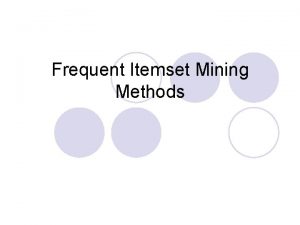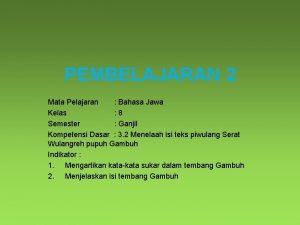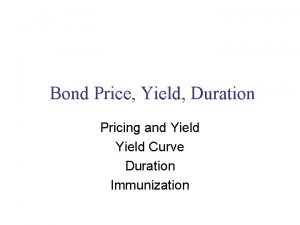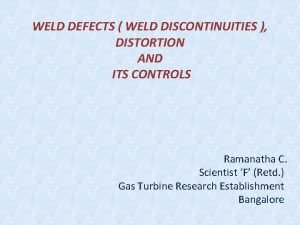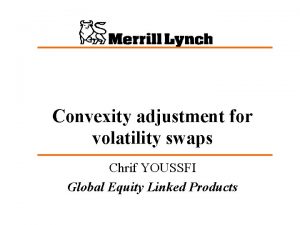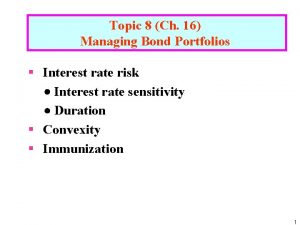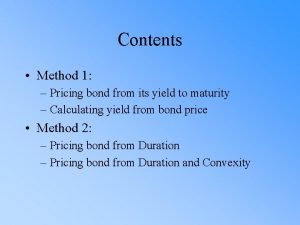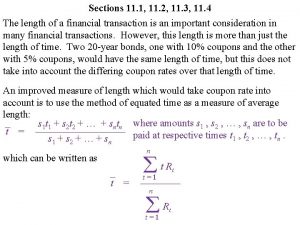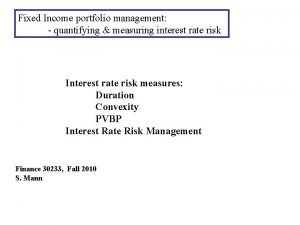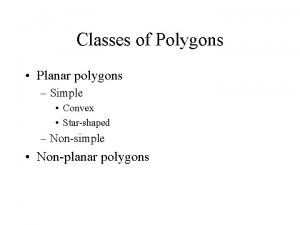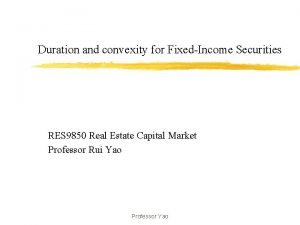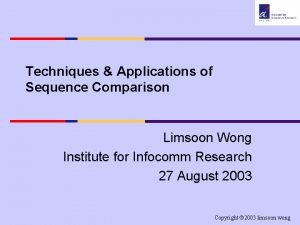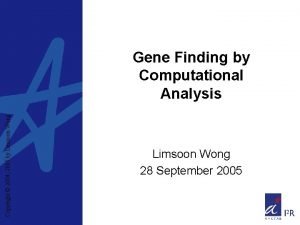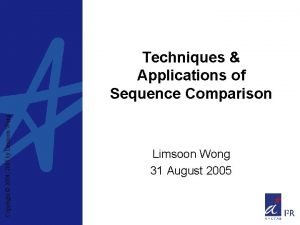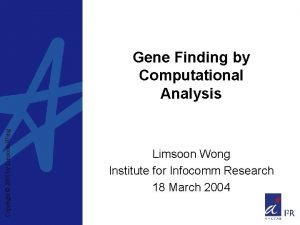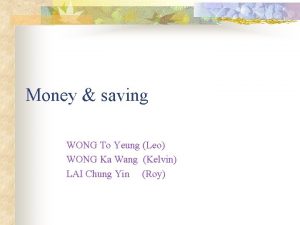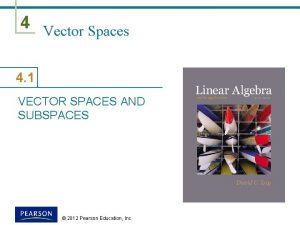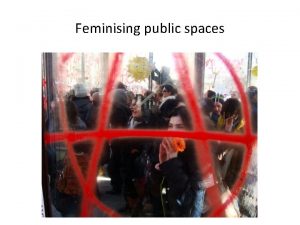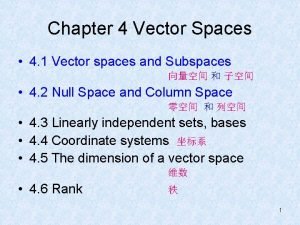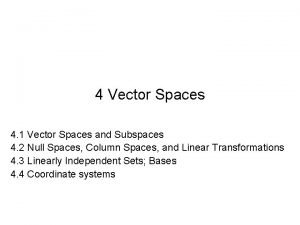Convexity in Itemset Spaces Limsoon Wong Institute for















![Plateaus = Generators + Closed Patterns • Theorem 7: Let [Li, Ri] = Pi Plateaus = Generators + Closed Patterns • Theorem 7: Let [Li, Ri] = Pi](https://slidetodoc.com/presentation_image/8e7561f442a91e9b5d23bee7f45315ee/image-16.jpg)



































- Slides: 51

Convexity in Itemset Spaces Limsoon Wong Institute for Infocomm Research Copyright © 2005 by Limsoon Wong

Plan • Frequent itemsets – – Convexity Equivalence classes, generators, & closed patterns Plateau representation Efficient mining of generators & closed patterns • Emerging patterns • Odds ratio patterns • Relative risk patterns Copyright © 2005 by Limsoon Wong

Frequent Itemsets Copyright © 2005 by Limsoon Wong

Association Rules • Buyer’s behaviour in supermarket • Mgmt are interested in rules such as Copyright © 2005 by Limsoon Wong

Frequent Itemsets • List of items: I = {a, b, c, d, e, f} • List of transactions: T = {T 1, T 2, T 3, T 4, T 5} • • • T 1 = {a, c, d} T 2 = {b, c, e} T 3 = {a, b, c, e, f} T 4 = {b, e} T 5 = {a, b, c, e} • For each itemset I I, sup(I, T) = |{ Ti T | I Ti}| • Freq itemsets: FT = F(ms, T) ={I I | sup(I, T) ms} Copyright © 2005 by Limsoon Wong

A Priori Property • Freq itemset from our example: ms=2 • A priori property: I FT I’ I, I’ FT Copyright © 2005 by Limsoon Wong

Lattice of Freq Itemsets • FT can be very large • Is there a concise rep? • Observation: – {a, b, c, e} is maximal – { } is minimal – everything else is betw them • { }, {a, b, c, e} a concise rep for FT? Copyright © 2005 by Limsoon Wong

Convexity • An itemset space S is convex if, for all X, Y S st X Y, we have Z S whenever X Z Y • An itemset X is most general in S if there is no proper subset of X in S. These itemsets form the left bound L of S • An itemset is most specific in S if there is no proper superset of X in S. These itemsets form the right bound R of S • L, R is a concise rep of S • [L, R] = { Z | X L, Y R, X Z Y} = S Copyright © 2005 by Limsoon Wong

Convexity of Freq Itemsets • Proposition 1: The freq itemset space is convex L, R is a concise rep for a freq itemset space Copyright © 2005 by Limsoon Wong

Is it good enough? • { }, {a, b, c, e} can be a concise rep for FT • But we cant get support values for elems in FT Copyright © 2005 by Limsoon Wong

What is a good concise rep? • A good concise rep for FT should enable these tasks below efficiently, w/o accessing T again: – – – Task 1: Enumerate {I FT} Task 2: Enumerate {(I, sup(I, T)) | I FT } Task 3: Given I, decide if I FT, & if so report sup(I, T) Task 4: Enumerate itemsets w/ sup in a given range etc. Copyright © 2005 by Limsoon Wong

Closed Itemset Rep • A pattern is a closed pattern if each of its supersets has a smaller support than it • The closed itemset rep of FT is CR ={ (I, sup(I, T)) | I FT, I is closed pattern} • Proposition 2: {(I, sup(I, T)) | I FT} = {(I, max{sup(I’, T) | (I’, sup(I’, T)) CR, I I’}) | I FT} May be inefficient for Tasks 2, 3, 4 Copyright © 2005 by Limsoon Wong

Generator Rep • A pattern is a generator if each of its subsets has a larger support than it • The generator rep of FT is GR = {(I, sup(I, T)) | I FT, I is generator}, GBd- where GBd- are the min in-freq itemsets • Proposition 3: {(I, sup(I, T)) | I FT} = {(I, min{sup(I’, T) | I’ GR, I’ I}) | I FT} May be inefficient for Tasks 2, 3, 4 Copyright © 2005 by Limsoon Wong

Freq Itemset Plateaus • Decompose freq itemset lattice into plateaus wrt itemset support, S = i Pi, with Pi = {I S | sup(I, T) = i} • Proposition 6: Each Pi is convex S = i [Li, Ri], where [Li, Ri] = Pi Copyright © 2005 by Limsoon Wong

From Generators & Closed Patterns To Equivalence Classes • The equivalence class of an itemset I is [I]T = { I’ | { Ti T | I’ Ti} = {Tj T | I Tj}} • Proposition 4: [I]T is convex. Furthermore, if [L, R] = [I]T, then L = min [I]T, and R = max [I]T is a singleton • Proposition 5: – An itemset I is a generator iff I min [I]T – An itemset I is a closed pattern iff I max [I]T Copyright © 2005 by Limsoon Wong
![Plateaus Generators Closed Patterns Theorem 7 Let Li Ri Pi Plateaus = Generators + Closed Patterns • Theorem 7: Let [Li, Ri] = Pi](https://slidetodoc.com/presentation_image/8e7561f442a91e9b5d23bee7f45315ee/image-16.jpg)
Plateaus = Generators + Closed Patterns • Theorem 7: Let [Li, Ri] = Pi be a freq itemset plateau of FT. Then – Pi = [X 1]T … … [Xk]T, where Ri = {X 1, …, Xk} – Ri are the closed patterns in Pi – Li = i min [Xi]T are the generators in Pi Copyright © 2005 by Limsoon Wong

Freq Itemset Plateau Rep • The freq itemset plateau rep of FT is PR = {( Li, Ri , i) | i ms} where [Li, Ri] is plateau at support level i in FT • Proposition 8: {(I, sup(I, T)) | I FT} = {(I, i)| ( Li, Ri , i) PR, X Li, Y Ri, X I Y} All 4 tasks are obviously efficient Copyright © 2005 by Limsoon Wong

Remarks • PR is a good concise rep for freq itemsets • PR is more flexible compared to other reps • PR unifies diff notions used in data mining • Nice. . . But can we mine PR fast? Copyright © 2005 by Limsoon Wong

Mining PR Fast • To mine PR fast, mine its borders fast • To mine its borders fast, mine equiv classes in the plateau fast • To mine equiv classes fast, mine generators & closed patterns of equivalence classes fast Copyright © 2005 by Limsoon Wong

From SE-Tree To Trie To FP-Tree T T 1 = {a, c, d} T 2 = {b, c, d} T 3 = {a, b, c, d} T 4 = {a, d} SE-tree of possible itemsets a ab ac abd acd b Copyright © 2005 by Limsoon Wong . d • b c ad bc bd cd c . . . d d • c d bcd <1: right-to-left, top-to-bottom traversal of SE-tree abcd FP-tree head table {} Trie of transactions a b c. . d. c d. • d • . . d .

GC-growth: Fast Simultaneous Mining of Generators & Closed Patterns Copyright © 2005 by Limsoon Wong

Step 1: FP-tree construction Copyright © 2005 by Limsoon Wong

Step 2: Right-to-left, top-to-bottom traversal Copyright © 2005 by Limsoon Wong

Step 5: Confirm Xi is generator Proposition 9: Generators enjoy the apriori property. That is every subset of a generator is also a generator Copyright © 2005 by Limsoon Wong

Step 7: Find closed pattern of Xi Proposition 10: Let X be a generator. Then the closed pattern of X is {X’’| X’ H[last(X)], X X’, X’ prefix of X’’, T[X’’] = true}. Copyright © 2005 by Limsoon Wong

Correctness of GC-growth • Theorem 11: GC-growth is sound and complete for mining generators and closed patterns Copyright © 2005 by Limsoon Wong

Performance of GC-growth • GC-growth is mining both generators and closed patterns • But is comparable in speed to the fastest algorithms that mined only closed patterns Copyright © 2005 by Limsoon Wong

Emerging Patterns Copyright © 2005 by Limsoon Wong

Differentiation and Contrast edible mushrooms poisonous mushrooms x% 0% EPs Example: {odor=none, gill_size=broad, ring_number=1} 64% (edible) vs 0% (poisonous) Copyright © 2005 by Limsoon Wong

Emerging Patterns • An emerging pattern is a set of conditions – usually involving several features – that most members of a class P satisfy – but none or few of the other class N satisfy I is emerging pattern if sup(I, P) / sup(I, N) > k, for some fixed threshold k NB: For this talk, we restrict ourselves to “jumping” emerging patterns Copyright © 2005 by Limsoon Wong

Convexity of Emerging Patterns • Theorem 12: Let E be an EP space and Pi = { I E | sup(I) = i}. Then E = i Pi, E is convex, and each Pi is convex. That is, E can be decomposed into convex plateaus Copyright © 2005 by Limsoon Wong

EP Plateau Rep • A concise rep for E = i Pi is EP plateau rep: EP_PR = { ( Li, Ri , i) | [Li, Ri] = Pi} • Proposition 13: {(I, sup(I)) | I E} = { (I, i) | ( Li, Ri , i) EP_PR, X Li, Y Ri, X I Y} All 4 tasks are obvious efficient Copyright © 2005 by Limsoon Wong

Efficient Mining of EP_PR • Modify GC-growth so that for each equiv class C, it outputs its support in +ve transactions Spos[C] & in -ve transactions Sneg[C] • Then [R[C], C] are emerging patterns if Spos[C] / Sneg[C] > k NB. Assume threshold for EP is k Copyright © 2005 by Limsoon Wong

Odds Ratio Patterns Copyright © 2005 by Limsoon Wong

Is an emerging pattern that is absent in most of the positive transactions a “real” pattern? edible mushrooms poisonous mushrooms x% 0% EPs Example: {odor=none, gill_size=broad, ring_number=1} 64% (edible) vs 0% (poisonous) What if this is 4%? 0. 04%? Copyright © 2005 by Limsoon Wong

Odds Ratio • Odds ratio for a (compound) factor P in a casecontrol study D is OR(P, D) = (PD, ed / PD, -d) / (PD, e- / PD, --) P is a odds ratio pattern if OR(P, D) > k, for some threshold k Copyright © 2005 by Limsoon Wong

Nonconvexity of Odds Ratio Pattern Space • Proposition 14: Let Sk. OR(ms, D) = { P F(ms, D) | OR(P, D) k}. Then Sk. OR(ms, D) is not convex Copyright © 2005 by Limsoon Wong

Convexity of Odds Ratio Pattern Space Plateaus The space of odds ratio • Theorem 15: patterns is not convex in OR Let Sn, k (ms, D) = { P general, but becomes F(ms, D) | PD, ed=n, convex when stratified OR(P, D) k}. Then into plateaus based on support levels Sn, k. OR(ms, D) is The space of odds ratio convex patterns can be concisely represented by plateau borders Copyright © 2005 by Limsoon Wong

Efficient Mining of Odds Ratio Pattern Space Plateaus How do you find these fast is key! GC-growth can find these fast : -) Copyright © 2005 by Limsoon Wong

Performance • FPClose* and CLOSET+ – closed patterns only • Our method computes – closed patterns – generators, and – odds ratio patterns (OR > 2. 5) Patterns that are much more statistically sophisticated than frequent patterns can now be mined efficiently Copyright © 2005 by Limsoon Wong

Relative Risk Patterns Copyright © 2005 by Limsoon Wong

Relative Risk • Relative risk for a (compound) factor P in a prospective study D is P is a relative risk pattern if RR(P, D) > k, for some threshold k Copyright © 2005 by Limsoon Wong

Nonconvexity of Relative Risk Pattern Space • Proposition 16: Let Sk. RR(ms, D) = { P F(ms, D) | RR(P, D) k}. Then Sk. RR(ms, D) is not convex Copyright © 2005 by Limsoon Wong

Convexity of Relative Risk Pattern Space Plateaus The space of relative • Theorem 17: risk patterns is not RR Let Sn, k (ms, D) = { P convex in general, but F(ms, D) | PD, ed=n, becomes convex when RR(P, D) k}. Then stratified into plateaus based on support levels Sn, k. RR(ms, D) is The space of relative convex risk patterns can be concisely represented by plateau borders Copyright © 2005 by Limsoon Wong

Efficient Mining of Relative Risk Pattern Space Plateaus How do you find these fast is key! x : = RR(R, D); GC-growth can find these fast : -) Copyright © 2005 by Limsoon Wong

Concluding Remarks • Equiv classes & plateaus are fundamental in – – Frequent itemsets Emerging patterns Odds ratio patterns Relative risk patterns, . . . • Equiv classes & plateaus of these complex patterns are convex spaces Complex pattern spaces are concisely representable by borders Complex pattern spaces can be efficiently and completely mined Copyright © 2005 by Limsoon Wong

Future Works Copyright © 2005 by Limsoon Wong

Improve Implementations • Modular pattern mining by construction of a fast equiv class generator and multiple statistical condition filters Generate borders of equiv classes & support levels Test for odds ratio Test for relative risk Copyright © 2005 by Limsoon Wong Test for 2 • Impact of item ordering • Impact of pushing complex statistical filters deeper into equivalence class generators

Apply to Classification • Develop classifiers based on the mined patterns – Simple ensemble – PCL • Impact on accuracy of using generators vs closed patterns Copyright © 2005 by Limsoon Wong • Simple ensemble f(X) = Argmax r(X) • PCL c C r Rc, r > 50% accuracy

Enrich Data Mining Foundations • Increase statistical sophistication of patterns mined • Increase dimensions and size of data handled Copyright © 2005 by Limsoon Wong

Acknowledgements • • Haiquan Li Jinyan Li Mengling Feng Yap Peng Tan Copyright © 2005 by Limsoon Wong
 Apriori algorithm
Apriori algorithm Tembang gambuh aja nganti kebanjur
Tembang gambuh aja nganti kebanjur Bond equivalent yield formula
Bond equivalent yield formula Site:slidetodoc.com
Site:slidetodoc.com Obligacja zerokuponowa wzór
Obligacja zerokuponowa wzór Convexity adjustment formula
Convexity adjustment formula Mesial e distal
Mesial e distal Formula convexity
Formula convexity Convexity duration formula
Convexity duration formula Convexity equation
Convexity equation What is pvbp
What is pvbp Convex polygon
Convex polygon Convexity anatomy
Convexity anatomy Duration formula
Duration formula Returpilarna
Returpilarna Steg för steg rita
Steg för steg rita Redogör för vad psykologi är
Redogör för vad psykologi är Gumman cirkel sång
Gumman cirkel sång Claes martinsson
Claes martinsson Svenskt ramverk för digital samverkan
Svenskt ramverk för digital samverkan Dikt på rim
Dikt på rim Nyckelkompetenser för livslångt lärande
Nyckelkompetenser för livslångt lärande Mantel som bars av kvinnor i antikens rom
Mantel som bars av kvinnor i antikens rom Tidbok
Tidbok Handledning reflektionsmodellen
Handledning reflektionsmodellen Orubbliga rättigheter
Orubbliga rättigheter Bamse för de yngsta
Bamse för de yngsta Verktyg för automatisering av utbetalningar
Verktyg för automatisering av utbetalningar Ministerstyre för och nackdelar
Ministerstyre för och nackdelar Tillitsbaserad ledning
Tillitsbaserad ledning Kanaans land
Kanaans land Slyngexcision
Slyngexcision Tack för att ni lyssnade bild
Tack för att ni lyssnade bild Ro i rom pax
Ro i rom pax Varför kallas perioden 1918-1939 för mellankrigstiden?
Varför kallas perioden 1918-1939 för mellankrigstiden? Vad är verksamhetsanalys
Vad är verksamhetsanalys Borstål, egenskaper
Borstål, egenskaper Cks
Cks Shivaismen
Shivaismen Lyckans minut erik lindorm analys
Lyckans minut erik lindorm analys Inköpsprocessen steg för steg
Inköpsprocessen steg för steg Påbyggnader för flakfordon
Påbyggnader för flakfordon Strategi för svensk viltförvaltning
Strategi för svensk viltförvaltning Sura för anatom
Sura för anatom Stickprovsvariansen
Stickprovsvariansen Typiska drag för en novell
Typiska drag för en novell Tack för att ni har lyssnat
Tack för att ni har lyssnat Rutin för avvikelsehantering
Rutin för avvikelsehantering Läkarutlåtande för livränta
Läkarutlåtande för livränta Kontinuitetshantering
Kontinuitetshantering Treserva lathund
Treserva lathund Myndigheten för delaktighet
Myndigheten för delaktighet
